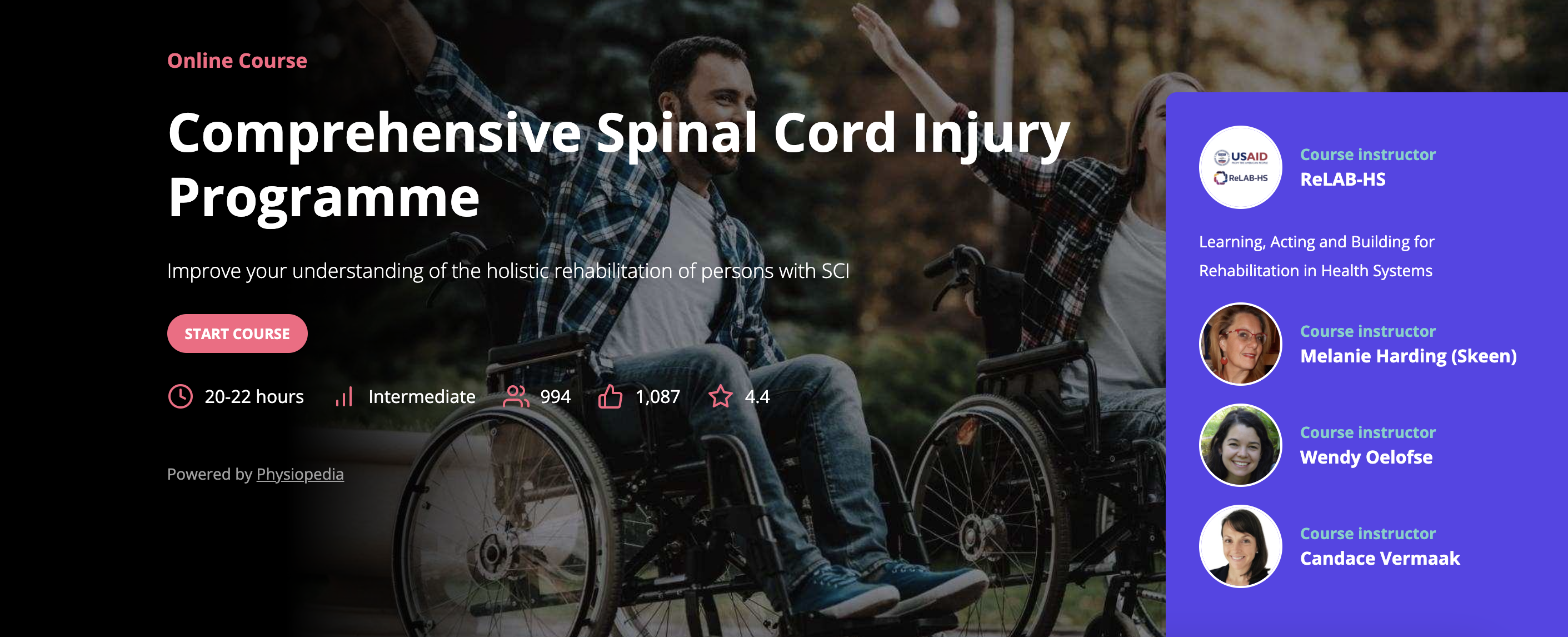At Physiopedia Plus (Plus), we are focused on creating high-quality, evidence-based courses by instructors from a range of rehabilitation professions. We’ve recently released a series of courses by occupational therapist Wendy Oelofse as part of our Comprehensive Spinal Cord Injury Programme.
Instructor highlight: Wendy Oelofse
Wendy was first introduced to spinal cord injury rehabilitation as a new graduate occupational therapist, working in a government hospital in South Africa. She’s continued to build up her knowledge and experience over the last 10 years.
She presents five courses on Plus which draw on her vast knowledge of spinal cord injury – and whether you are an occupational therapist or indeed of any rehabilitation profession working in spinal cord injury rehabilitation, then you will learn something from Wendy’s practical courses.
The role of occupational therapy in spinal cord injury rehabilitation
Wendy’s first course – The Role of Occupational Therapy in Acute Spinal Cord Injury – provides a general overview of the work occupational therapists do with individuals with spinal cord injuries. Her next four courses are full of clinical tips to help preserve and optimise upper limb function in persons with tetraplegia. You’ll learn about assessment and treatment options to reduce the risk of contractures, pain, and functional limitations in individuals with spinal cord injuries. Treatments covered include upper limb positioning, assistive devices, transfers, splints and more.
“As a physiotherapist completing these courses, I have enriched my knowledge and skills in upper limb protection, oedema management, splinting and adaptive equipment to prevent functional limitations and enhance performance.” – Ewa Jaraczewska, Physiotherapist
Best of all, Wendy’s courses are full of practical demonstrations. Her videos demonstrate transfers, wheelchair propulsion techniques and different upper limb positioning options – so you can implement these techniques right away in your own practice.
No matter what your role is in the spinal cord injury team, you’ll learn how the work of occupational therapists can complement your own.
Start learning now
- The Role of Occupational Therapy in Acute Spinal Cord Injury
- Upper Limb Management in Upper Tetraplegia
- Upper Limb Management in Lower Tetraplegia
- Upper Limb positioning and Management Strategies in Spinal Cord Injury
- Preventing Upper Limb Pain and Injury in Spinal Cord Injury
– Thanks to Plus Learning Architect Ewa Jaraczewska for input in developing this article

Plus is a subscription site that offers continuing education and professional development opportunities for our community. Your subscription fees fund the Physiopedia charity website to keep it updated and openly accessible to all.
Your subscription also provides FREE access to Plus for rehabilitation professionals in low income countries.
There are also discounts available depending on where you live and for students.
This work is supported by the USAID funded Learning Acting Building for Rehabilitation in Health Systems (ReLAB-HS) project and is not possible without the generous and committed contribution of the Leahy War Victims fund.
ReLAB-HS is made possible by the generous support of the American people through the United States Agency for International Development (USAID) and is implemented under cooperative agreement number 7200AA20CA00033. The consortium is managed by prime recipient, Johns Hopkins Bloomberg School of Public Health.


